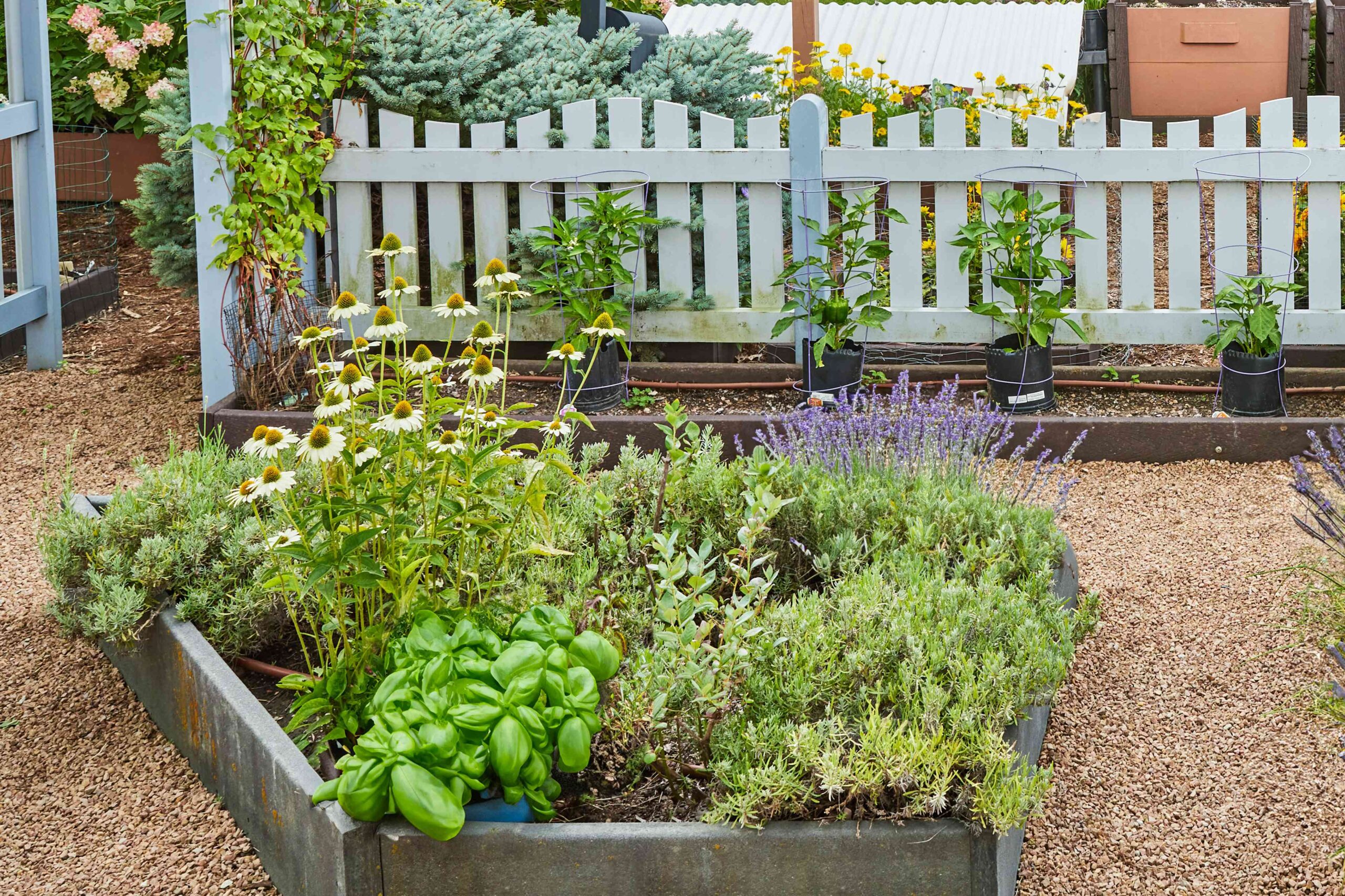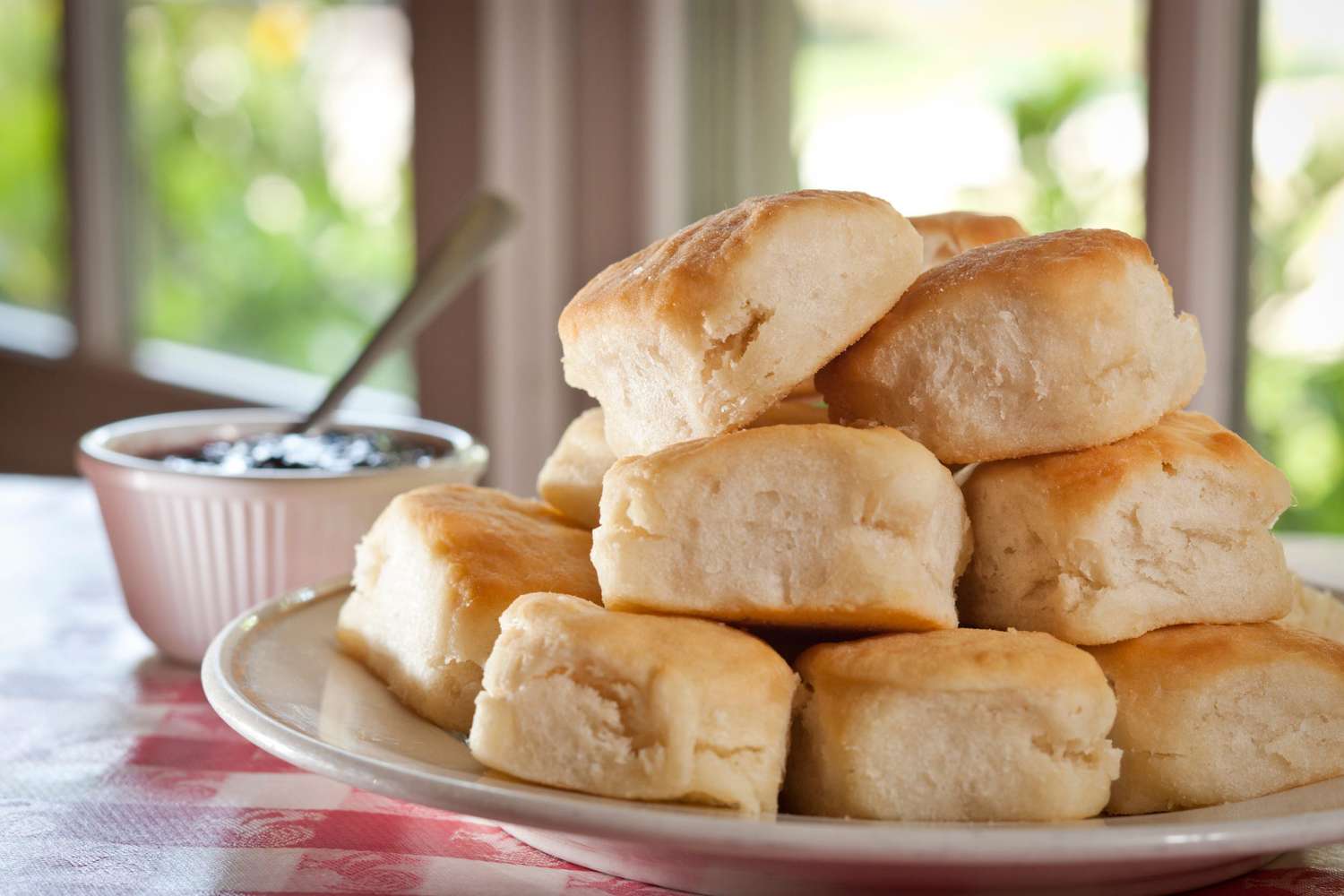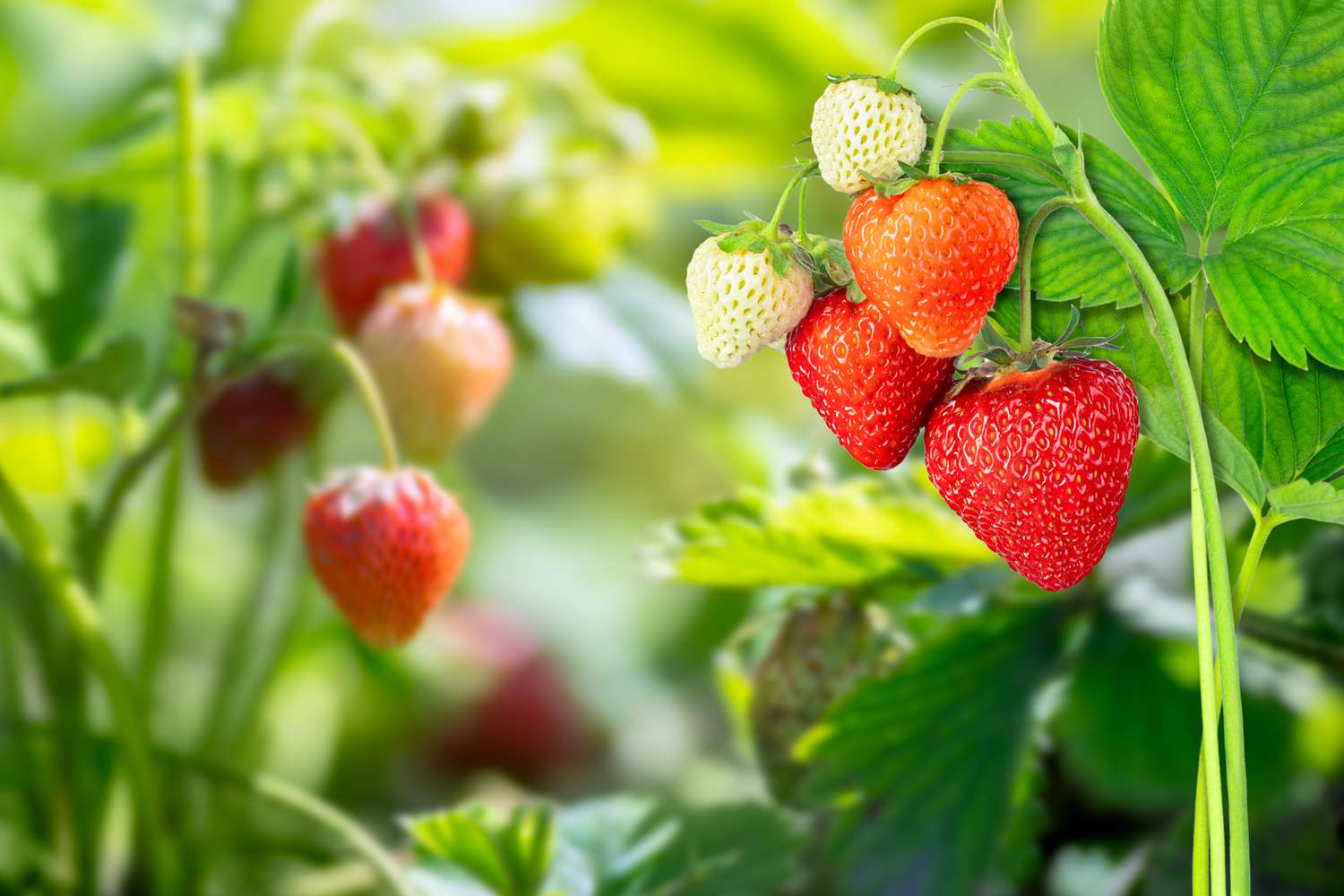
Everything You Should Know About Starting an Herb Garden, From Planting to Harvesting
- Pick a space for your herb garden that can provide the proper light, soil nutrients, and humidity your herbs need.
- Pick and place herbs according to their needs—some plants need less water than others.
- After harvesting herbs they can either be frozen or dried in order to keep them viable for longer.
Herb gardens are the perfect introduction to gardening and supply your senses and pantry with fresh flavors and scents. Whether you plan to grow herbs in containers or a small plot, here are the things you need to know to start a successful herb garden.
Pick a Space for Your Herb Garden
Michele Jackson / Getty Images
Herb gardens are so popular because they are easy to start and maintain; they grow quickly and you can begin harvesting within a few weeks. The size of your herb garden is up to you and depends on the quantity and variety of herbs you want to grow.
Light
Almost all herbs require at least 6 hours of full sun daily. A few such as chervil, mint, chives, and cilantro can be grown in an area with light shade.
Soil
Herbs need well-draining soil. They will no thrive in heavy, wet soil. Adding compost to clay soil will help improve the structure and drainage. The soil does not have to be highly fertile; too many nutrients tends to produce excessive amounts of poorly-flavored foliage.
Temperature and Humidity
Mediterranean herbs like basil, thyme, rosemary, oregano, and lavender like warm, sunny, dry conditions. Most perennial and biennial herbs can overwinter if they are protected with layers of mulch.
Established herbs can tolerate dry conditions but supplemental water is recommended during periods of drought. Use mulch to conserve soil moisture, but keep it away from the base of the plants to prevent stem rot.
Want more gardening tips? Sign up for our free gardening newsletter for our best growing tips, troubleshooting hacks, and more!
Pick Which Herbs You Want to Grow
Westend61 / Getty Images
Most people plant the herbs they enjoy using for cooking, making teas, or drying for potpourri. Some make selections based on fragrance or bloom color. The beauty of an herb garden is that it is personal to your preferences. It is a good idea to group your chosen herbs by their watering needs to prevent over-watering those that prefer drier conditions.
Drought-Tolerant Herbs
- Borage: Once established, allow the soil to dry out between waterings.
- Fennel: Drought-tolerant once established; allow the soil to dry between waterings.
- Lavender: Lavender will not survive wet roots and heavy soil.
- Marjoram: Drought-tolerant and prefers dry soil with occasional watering.
- Oregano: Thrives in dry and warm climates with low rainfall levels.
- Sage: A drought-tolerant plant that prefers soil to dry out between waterings.
- Rosemary: Prefers slightly drier conditions and minimal watering.
- Thyme: Water only when the soil is completely dry.
- Winter savory: Once established, prefers dry soil.
Herbs with Moderate Watering Needs
- Basil: A broadleaf herb, it requires more water than herbs like thyme, rosemary, and sage.
- Bay laurel: For healthy leaves, keep the soil evenly moist.
- Catnip: A member of the mint family, catnip requires consistent moisture to flourish.
- Chervil: Prefers evenly moist soil with good drainage.
- Chives: Although drought-tolerant, chives must be watered evenly throughout the growing season for high yields.
- Cilantro: The soil should be kept evenly moist for tender leaves.
- Dill: Requires consistent moisture levels to flower and produce seeds.
- Lemon balm: Prefers soil that is moist but never wet.
- Lemon verbena: Requires regular watering.
- Mint: Thrives around water and can tolerate wet roots.
- Parsley: Evenly moist soil produces the most tender leaves of flat or curly parsley.
- Tarragon: Young plants need regular watering to become established.
Propagating Herbs
The Spruce / Almar Creative
There are many ways to propagate herbs, and doing so can keep your herb garden fresh and perpetually growing for years.
By Seed
Nearly all herbs grow well from seed that you’ve saved or purchased.
Fine herbs like anise, cilantro, dill, and fennel should be directly sown into the garden once the danger of frost has passed because they do not transplant well. Basil, parsley, sage, and thyme can be started indoors and transplanted into the garden when temperatures warm.
After planting seeds in well-tilled soil with good drainage, water lightly until they germinate.
From Cuttings
To quickly establish new plants, herbs can be propagated from cuttings.
- Take cuttings in spring or early summer when the plant is actively growing; select a 3 to 4-inch stem that is healthy and tender.
- Strip the leaves off the bottom two inches and dip the cut end in rooting hormone.
- Place the stem in a small pot of moistened potting soil.
- Cover the pot with a plastic bag and place it in an area with bright, indirect light.
- Keep the soil moist and remove the plastic bag when new leaves begin to grow.
- Transplant the cutting into the garden once the plant has at least 3 or 4 sets of new leaves.
By Division
Herbs that have a clumping habit like tarragon, chives, and mint can be divided to create new plants. Use a garden trowel to gently dig up the clump of herbs. Use a clean, sterile knife to separate individual plants and replant or share them with others.
Harvesting Herbs
Valeriy_G / Getty Images
Once an herb plant has enough foliage to maintain growth, fresh leaves can be harvested. It’s best to harvest herbs before they flower or go to seed because leaf production declines. Snip stems at a leaf node with sharp, sterile clippers.
For the best flavor, pick leaves or seeds after the morning dew has evaporated but before temperatures are high. Before using, discard any bruised or soiled leaves and inspect the herbs for insects or foreign matter. Rinse the herbs under running water and shake gently to remove excess moisture.
How to Preserve Herbs
alle12 / E+ /Getty Images
The two best methods for preserving herbs are freezing and drying. Depending on the herbs you’re drying, one method might suit your needs better than the other.
By Freezing
Tender herbs like basil, chives, cilantro, dill, lemon balm, mint, parsley, and tarragon freeze well in small batches.
- After harvesting and rinsing the herbs, pat the herbs dry.
- Place the herbs in a freezer bag, seal the bag, and place it in the freezer.
- To freeze in pre-measured portions, chop the herbs finely and place them in an ice cube tray. Add a small amount of water and allow the tray to freeze. When solid, pop out the cubes and store them in plastic bags.
By Drying
Rosemary, sage, thyme, and winter savory are the easiest herbs to dry and will retain the most flavor and color.
- After harvesting and rinsing the herbs, pat them dry with a paper towel.
- Form small bunches and tie them with cotton string.
- Hang the bunches upside down in a warm, well-ventilated place until the moisture evaporates. Avoid hang in direct sunlight that can strip flavor and color.
- The herbs are dry when the leaves crumble and the stems break when bent.
- Store dried herbs whole, crumbled, or ground in a cool, dark spot in a labeled airtight container for up to six months for the best flavor.










